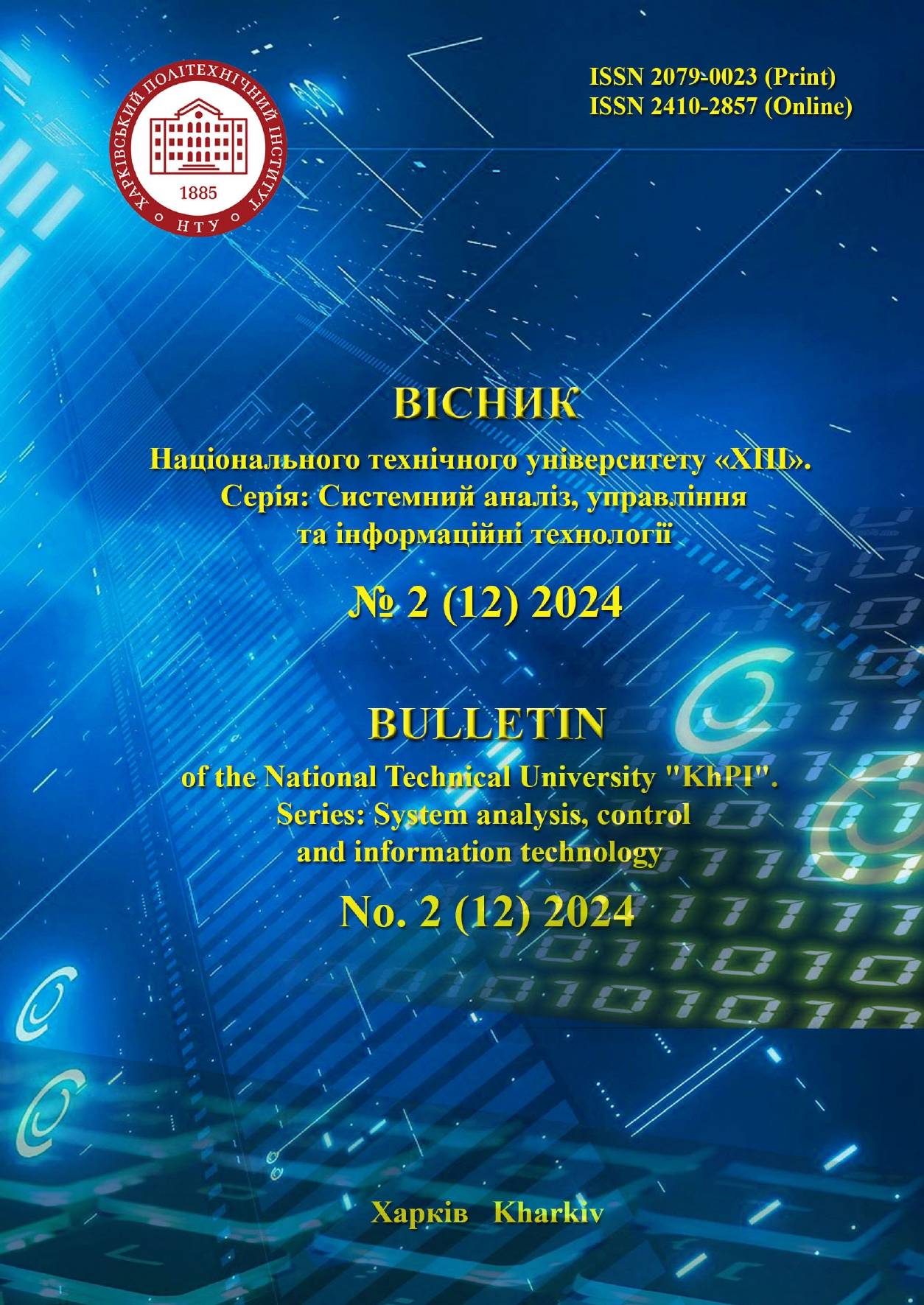MATHEMATICAL RATIONALE FOR CREATING AN APPLICATION FOR CONDUCTING RANDOM MEETINGS «COFFEE BREAK»
DOI:
https://doi.org/10.20998/2079-0023.2024.02.11Keywords:
mobile app facilitating random meetings, socialization, networking, information system, conceptual model, mathematical modelAbstract
Modern society is facing an increasing trend of social isolation, as people increasingly rely on social media for interaction instead of face-to-face communication. This lack of in-person contact often leads to feelings of loneliness and disconnection. This study proposes the concept of a mobile application, CoffeeBreak, designed to counteract these trends by offering users a platform to arrange brief, in-person meetings, such as a quick coffee chat. By encouraging users to meet in real life, the application aims to foster meaningful social connections and combat the sense of isolation prevalent in today’s digital world. The core innovation of CoffeeBreak lies in its unique approach to matchmaking. Instead of presenting users with an overwhelming array of choices, the app offers a single match within a specified timeframe, thus addressing the common issue of decision paralysis that can arise when users are presented with too many options. By simplifying the process, CoffeeBreak allows users to spend less time making selections and more time connecting with others. This approach is inspired by practices adopted within large companies, where employees use bots in work chat groups to find a partner for a short meeting. These interactions help raise awareness about the activities in other departments and foster informal and professional connections. Expanding this practice to a broader societal level, CoffeeBreak is intended to provide individuals with the opportunity to network beyond their immediate professional circles. This research has established a conceptual system model and developed the mathematical frameworks necessary to support this type of meeting arrangement. Specifically, the study has defined the concept of the CoffeeBreak mobile application, outlined the system model with detailed subsystems and environment interactions, and formulated mathematical models to form the basis of the candidate selection algorithm. The model ensures that users are matched in a way that promotes engagement, as each participant can be assured that their matched partner is equally motivated for the encounter. As the application continues to evolve, it can incorporate additional scheduling criteria to enhance the quality of matches and distribution. For example, if a user attends a meeting within the first two days, they could unlock the potential for additional matches by the end of the week. Ultimately, CoffeeBreak aims to broaden users' horizons, help them form new professional and informal connections, and enhance their social skills. This study’s findings lay the groundwork for a new tool that encourages in-person interactions, enabling individuals to expand their social networks in a balanced and purposeful manner.
References
Primack B., Shensa A., Sidani J., Whaite E., Lin L., Rosen D., Colditz J., Radovic A., Miller E. Social Media Use and Perceived Social Isolation Among Young Adults in the U.S. Available at: https://d-scholarship.pitt.edu/35420/ (accessed: 28.10.2024).
Lanterman J., Blithe S. The Benefits, Challenges, and Disincentives of Interdisciplinary Collaboration. Available at: https://www.researchgate.net/publication/338048962_The_Benefits_Challenges_and_Disincentives_of_Interdisciplinary_Collaboration/fulltext/63923b4e484e65005bf49803/The-Benefits-Challenges-and-Disincentives-of-Interdisciplinary-Collaboration.pdf (accessed: 28.10.2024).
Apps That Will Actually Help You Make Friends. Available at: https://www.cosmopolitan.com/sex-love/a24799641/best-friendship-apps/ (accessed: 28.10.2024).
Making Friends Apps to Meet New People. Available at: https://agiletech.vn/top-making-friends-apps-to-meet-new-people/ (accessed: 29.10.2024).
If You Have No Idea How to Make Friends as an Adult, Download These Apps. Available at: https://www.yahoo.com/lifestyle/11-apps-apos-ll-friends-200300960.html (accessed: 29.10.2024).
Pettersen L., Karlsen F. Strategic communication in digital ecosystems: A critical discourse analysis of dating applications. In Strategic communication – contemporary perspectives. Available at: https://www.kristiania.no/en/research/research-projects/kuc/digilove (accessed: 15.10.2024).
Iyengar S. S., Lepper M. R. When Choice is Demotivating: Can One Desire Too Much of a Good Thing? Available at: https://business.columbia.edu/faculty/research/when-choice-demotivating-can-one-desire-too-much-good-thing (accessed: 29.10.2024).
Ziuziun V. Analysis of the impact of information technologies for making management decisions, including project ones. Available at: https://www.researchgate.net/publication/371492759_Analysis_of_Aspects_of_Increasing_the_Efficiency_of_IT_Project_Management (accessed 30.10.2024).
Ziuziun V. Analysis of Aspects of Increasing the Efficiency of IT Project Management. Available at: https://www.researchgate.net/publication/371492759_Analysis_of_Aspects_of_Increasing_the_Efficiency_of_IT_Project_Management (accessed: 30.10.2024).
Documentation Flutter. URL: https://flutter.dev/ (accessed: 30.10.2024).
Documentation Flask. Available at: https://flask.palletsprojects.com/en/3.0.x/ (accessed: 30.10.2024).
Documentation MySQL. URL: https://www.mysql.com/ (accessed: 30.10.2024).
Downloads
Published
How to Cite
Issue
Section
License

This work is licensed under a Creative Commons Attribution 4.0 International License.
Authors who publish with this journal agree to the following terms:
- Authors retain copyright and grant the journal right of first publication with the work simultaneously licensed under a Creative Commons Attribution License that allows others to share the work with an acknowledgement of the work's authorship and initial publication in this journal.
- Authors are able to enter into separate, additional contractual arrangements for the non-exclusive distribution of the journal's published version of the work (e.g., post it to an institutional repository or publish it in a book), with an acknowledgement of its initial publication in this journal.
- Authors are permitted and encouraged to post their work online (e.g., in institutional repositories or on their website) prior to and during the submission process, as it can lead to productive exchanges, as well as earlier and greater citation of published work (See The Effect of Open Access).


